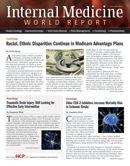Publication
Article
Internal Medicine World Report
How Exercise Protects the Heart
Author(s):
In a rat study, Brazilian researchers looked at the connections between exercise, opioid receptors (OR) and myocardial ischemia-reperfusion (IR) injuries.

In a rat study, Brazilian researchers looked at the connections between exercise, opioid receptors (OR) and myocardial ischemia-reperfusion (IR) injuries.
Reporting in PLOSone online on Nov. 21, Juliana Borges, MD, and colleagues described 7 experiments involving groups of rats trained on a treadmill to get them into shape. Aside from a control group and a sham control group, the animals got either a nonselective OR antagonist, a kappa OR antagonist, a delta OR antagonist, or a mu OR antagonist. They were then subject to lab-induced IR injuries.
The team found that the exercised rats had smaller myocardial infarct size—about 34% smaller.
Though it has long been known that exercise is cardioprotective, both in humans and other animals, the researchers wanted to see if they could find the underlying mechanisms of that effect. There were several possible explanations, including direct effects on the myocardium, increased nitric oxide production, increased production of heat shock proteins, enlargement of coronary capillaries and arteries, reduced production of reactive oxygen species in myocardial mitochondria, and improved function of sarcolemmal and/or mitochondrial ATP-sensitive potassium channels. But they decided to explore where endogenous opioids contributed to heart protection.
The study confirmed that this is the case—though it may not be the sole contributing factor.
An increase in myocardial antioxidants may also contribute to exercise-induced cardioprotection.
Of the various OR antagonists used on the rats, the group that received the delta OR antagonist was found to have the most protection from the induced IR injury.
The team “hypothesized that the protective effects of delta OR may be linked to the activation of protein kinase C” which plays a role in inhibiting Ca 2+ entry into the cell and preventing Ca2+ overload. That can result in mitochondrial swelling, protein release and cell death. But further research is needed to see if that is the case.






